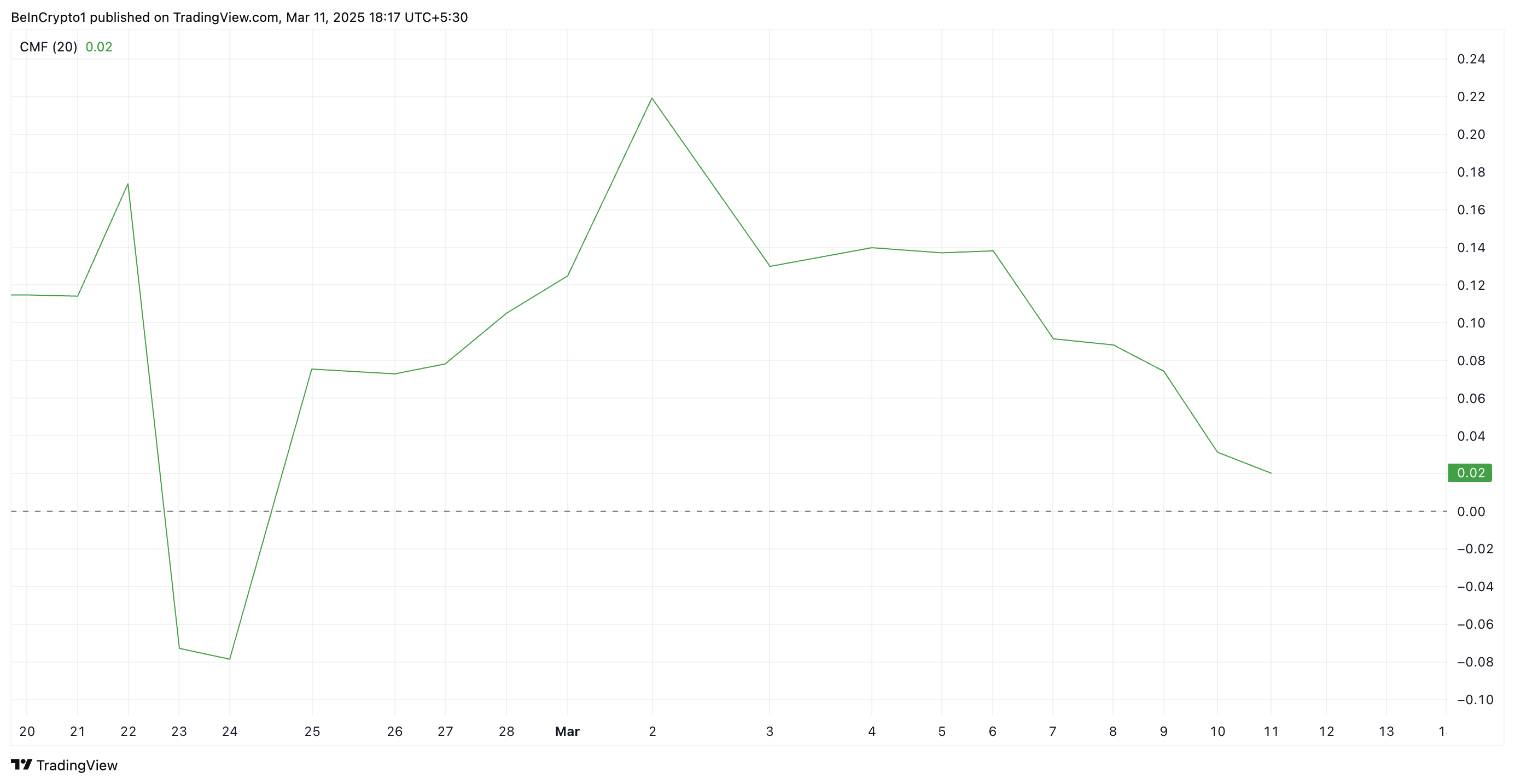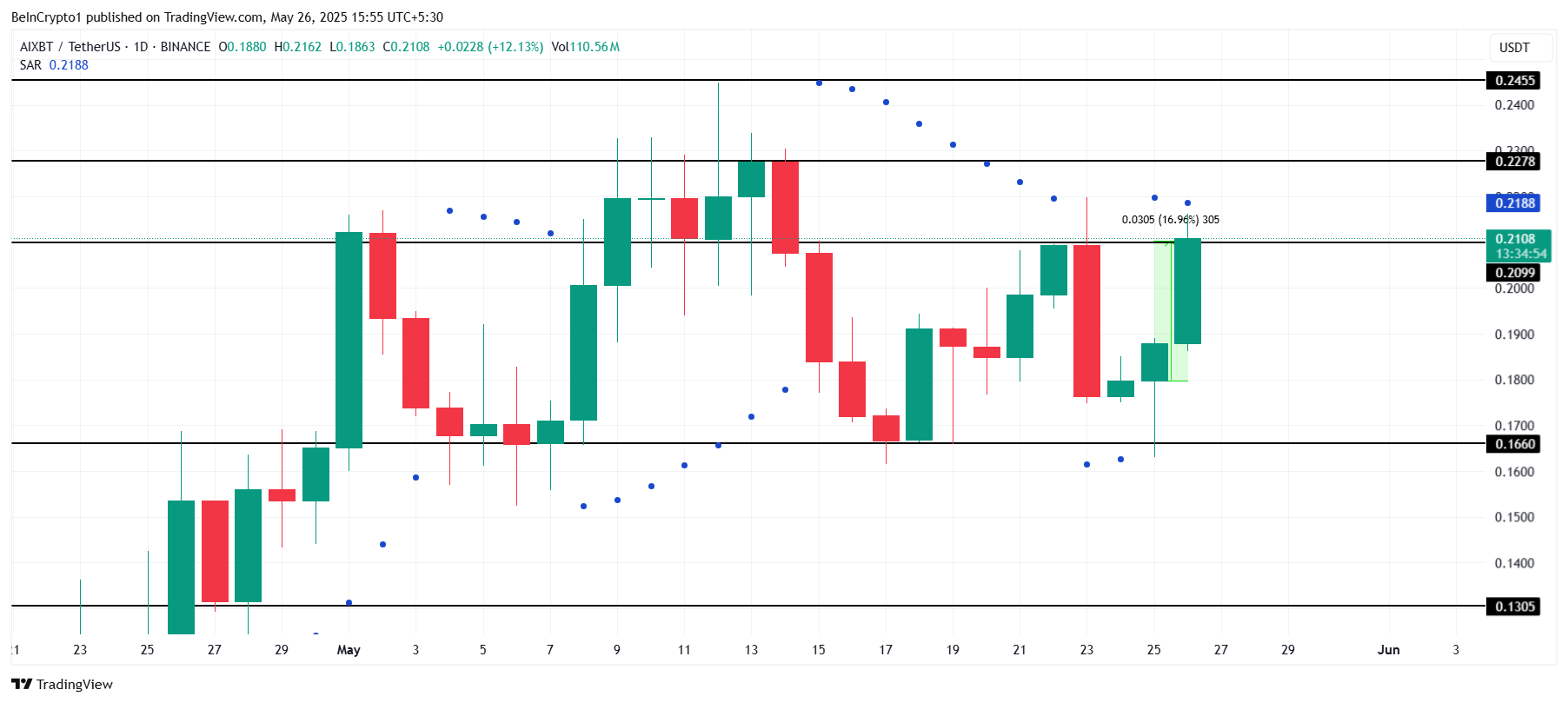XRP continues its decline, falling 10% over the past week as bearish momentum strengthens.
The fourth-largest cryptocurrency by market capitalization remains under pressure, with waning buying interest hinting at the possibility of further losses.
XRP’s Outlook Worsens as Buying Pressure Fades
Since reaching an all-time high of $3.40 on January 16, XRP has remained mostly within a descending parallel channel. This is a bearish pattern formed when an asset’s price moves between two downward-sloping parallel trendlines, indicating a downtrend.

When an asset’s price trades within this channel, it marks a period of decline during which sellers dominate, and buying activity is low. This has put significant downward pressure on XRP’s price in the past month.
XRP currently trades at $2.11, exchanging hands below its 20-day exponential moving average (EMA). This key moving average measures the asset’s average price over the past 20 trading days, giving more weight to recent prices to reflect short-term trends.

When an asset’s price falls below its 20-day EMA, it suggests that selling pressure is strong and the asset is in a bearish phase. This signals continued downside momentum for XRP unless buying interest increases to push the token’s price back above the EMA.
Further, XRP’s Chaikin Money Flow (CMF) is currently in a downtrend and is poised to breach its zero line. This indicator, which measures money flow into and out of an asset, is at 0.02 as of this writing.

When an asset’s CMF attempts to fall below zero, it reflects the weakening buying pressure and increasing selling dominance. This suggests that money is flowing out of XRP rather than into it, reinforcing the bearish outlook.
XRP Faces Bearish Pressure: Could It Crash to $1.47?
XRP risks dropping below $2 if new demand remains insignificant. In that scenario, it could plummet to $1.47, a low it last reached in November.

On the other hand, if selling pressure wanes and XRP sees an uptick in buying activity, it could push its price past the resistance at $2.81 toward the $3.40 all-time high.
The post XRP Bears Dominate as Price Continues to Fall Further from January’s $3.40 Peak appeared first on BeInCrypto.










